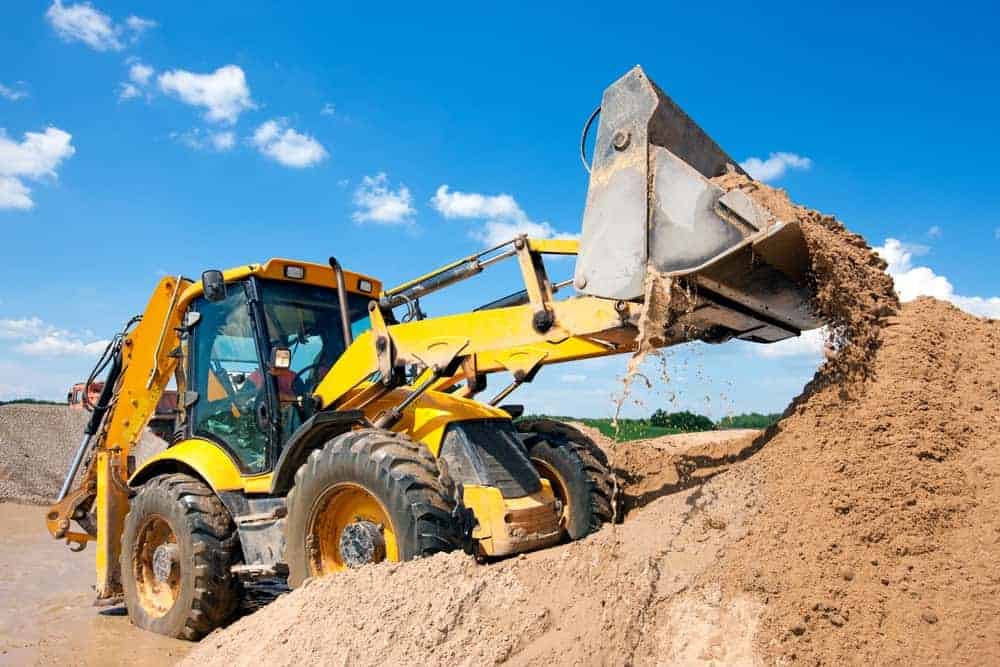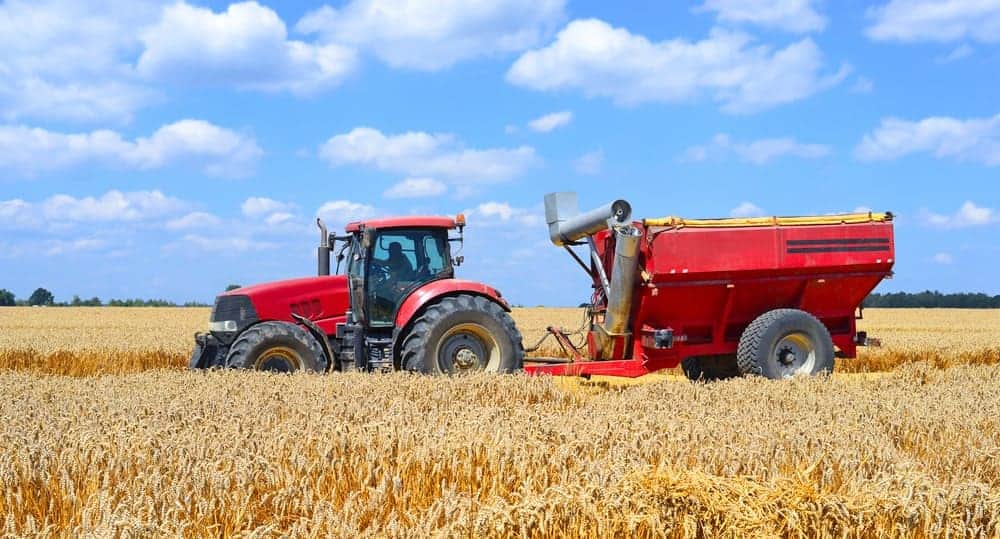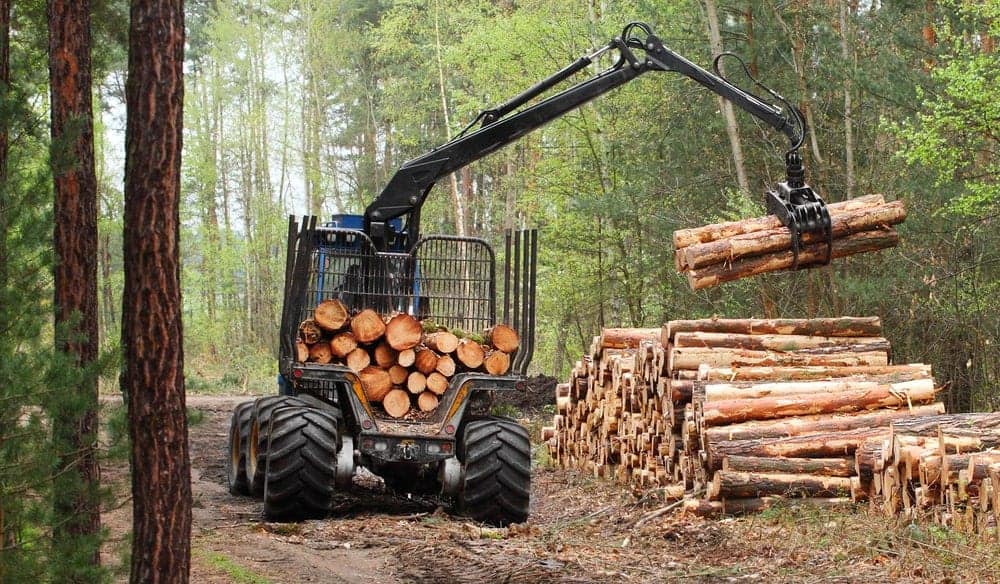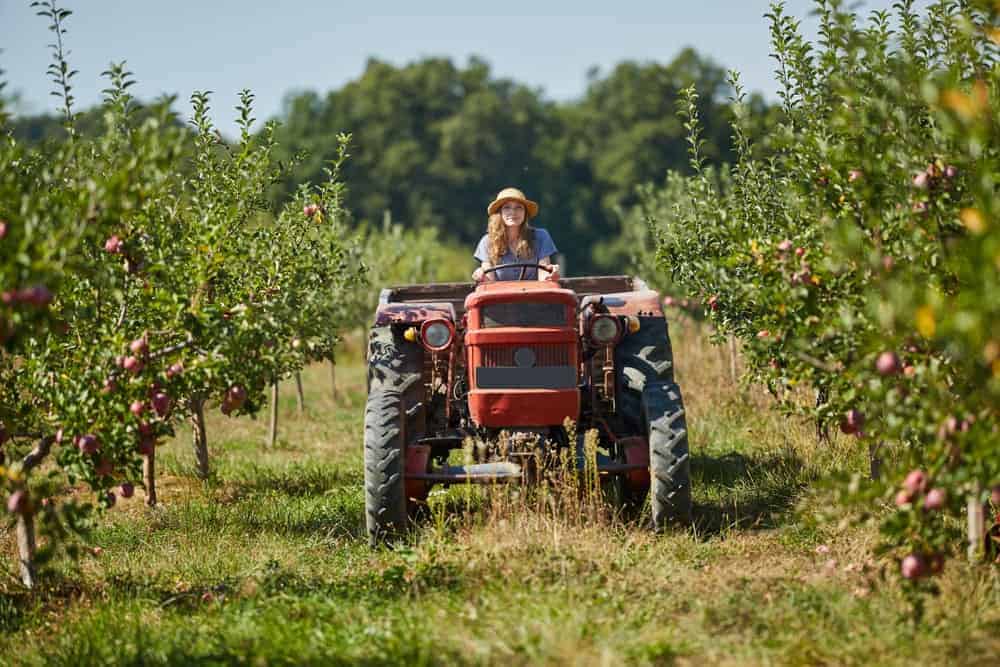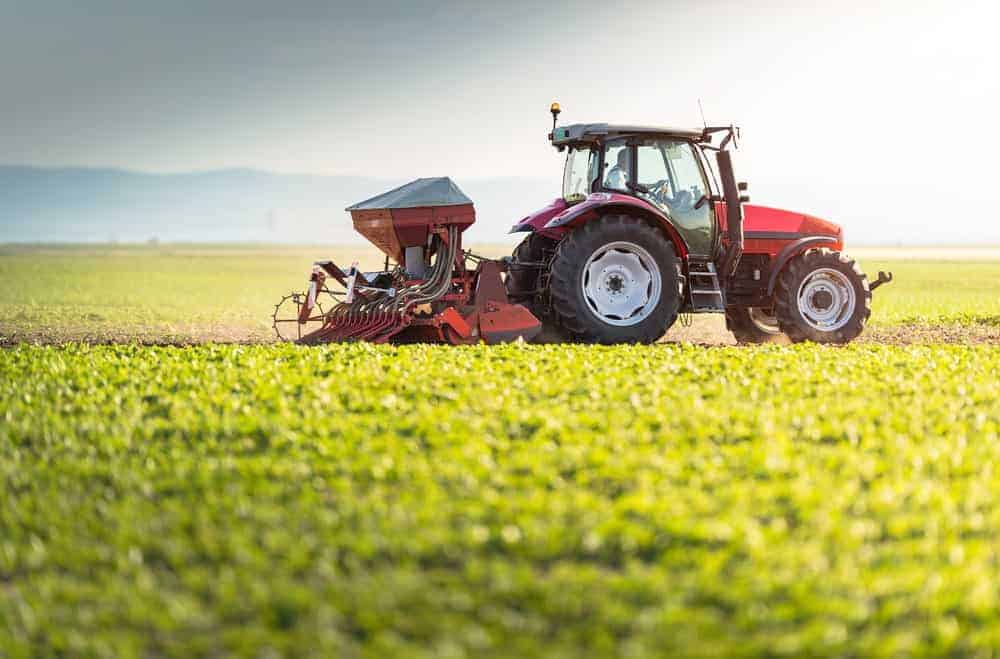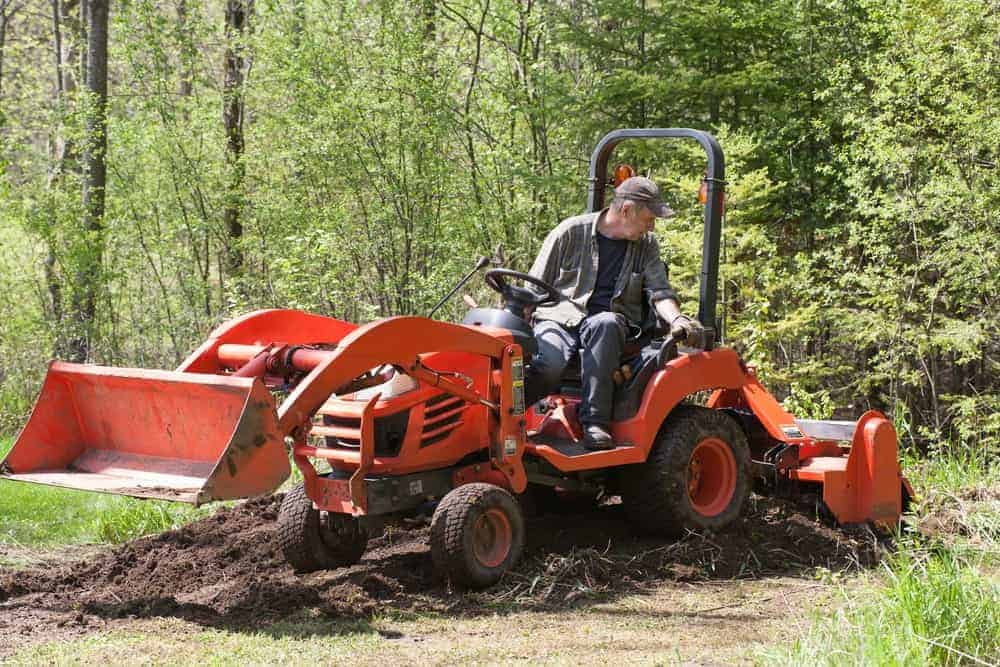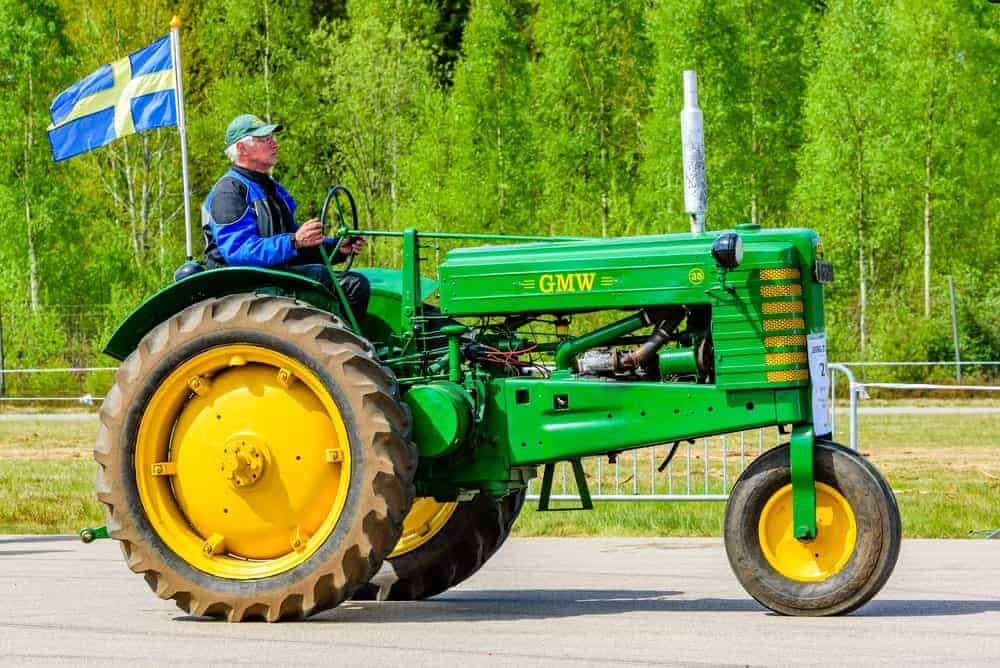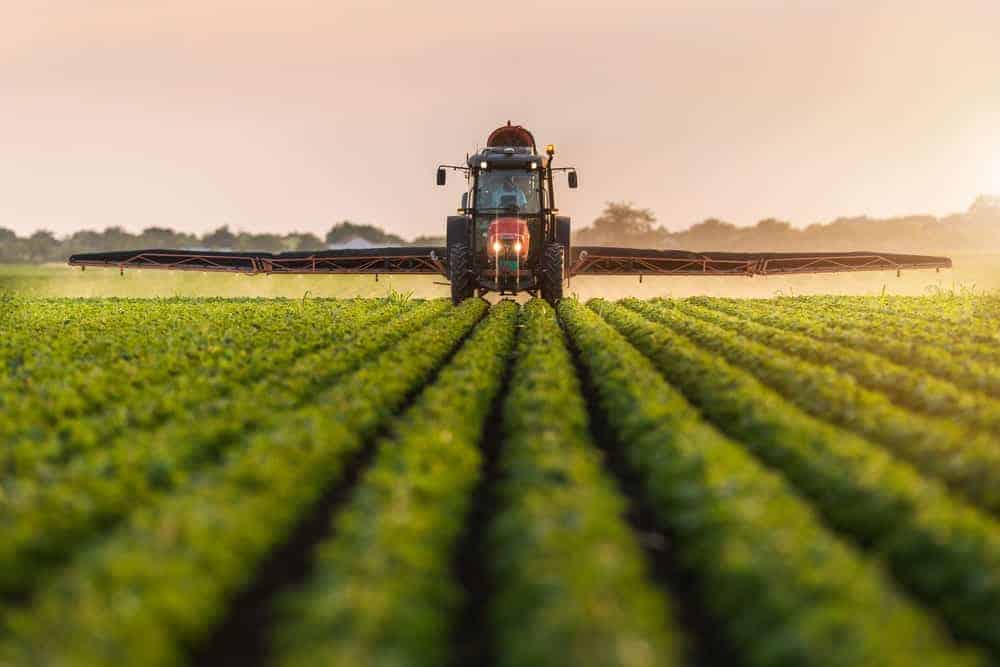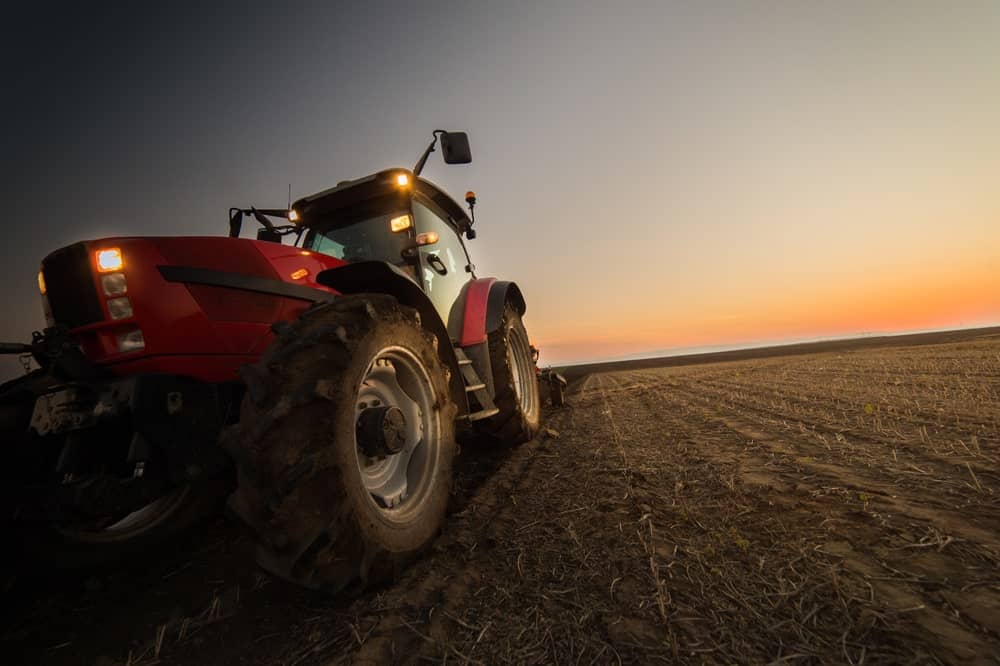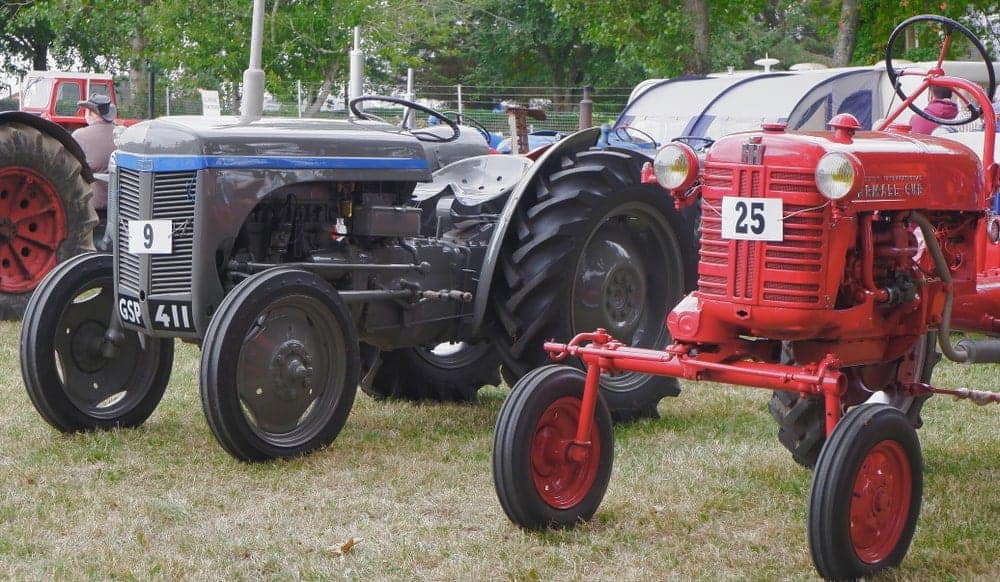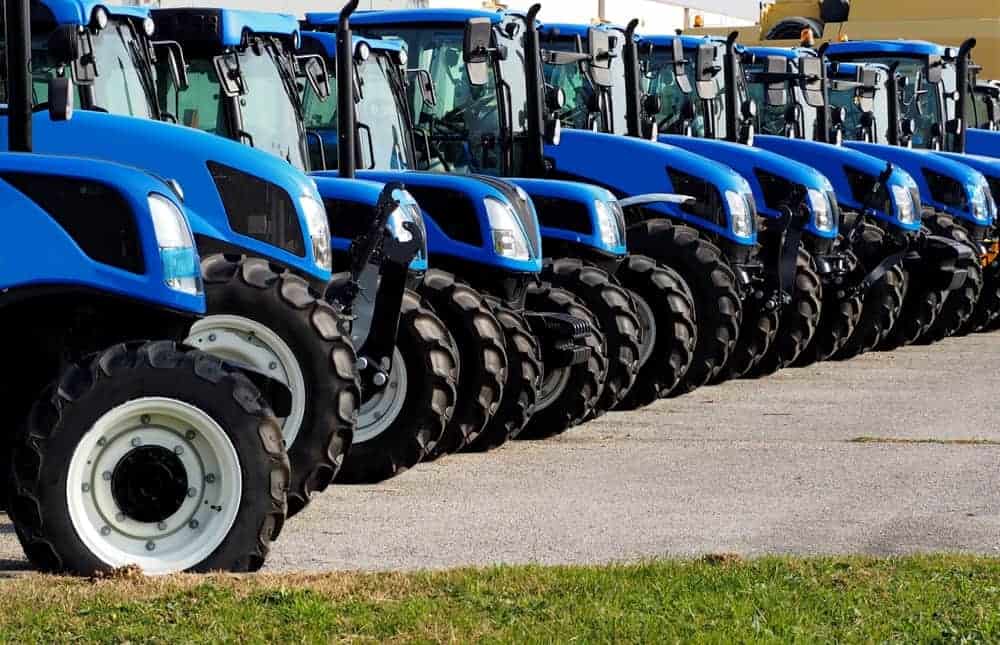John Deere is the tractor pioneer and the man behind the industry’s leading tractor brand. In 1837, Deere invented the first self-cleaning plow made of an old saw’s steel as a solution for the Midwest farmers’ plight of plowing with their cast-iron plows.
Fast forward to today, modern farmers still rely heavily on heavy-duty tractors. The innovation also continues with the introduction of the self-driving tractor in 2012 and other modern features such as GPS, app management, camera surveillance, crop sensors, and telematics.
Purpose
Earth-Moving Tractors
Earth-moving tractors have to be quite strong and extremely heavy, and they come in both tire and track types. If you’re working on a construction site, including work on dams and quarries, an earth-moving tractor can be a lifesaver.
They move earth to dig holes for basements and new construction, in addition to numerous other tasks, and even though they are expensive they are always built to last. They are used to move and relocate things such as dirt, debris, rocks, mud, or even lumber, and the specific job you have in mind is important to know before shopping for these tractors. There are essentially three different types of earth-moving tractors, and these include the following.
- Excavators: used mostly for demolishing and digging, excavators can shovel dirt or lift heavy pieces of equipment. Their long bucket arm is attached to a cab that rotates, and their seats are elevated so that drivers can get a clear view of everything they need to see.
- Backhoe loaders: you can do everything from digging holes to breaking up asphalt with these loaders. They have buckets in the back of the equipment for digging and shovels in the front that can be adjusted to your needs.
- Bulldozers: also known as crawlers, these machines contain large plates at the front for pushing large piles of dirt and rocks, and they can be used to clear out a property located on all types of terrain. They also have extra-wide tracks to maintain their balance while doing the job.
Garden Tractors
Ranging from 1 to 10 HP, although some of the newer ones go up to 20 HP, garden tractors tend to have a very small construction size. They are used more for grass-cutting tasks than anything else, or for creating new flower beds in your garden. Garden tractors have wheels that are roughly the size of a scooter’s wheels but are much thicker.
To date, there are over 100 different models and designs of garden tractors, and they range in price from under $2,000 to over $4,000. In short, when you’re looking for a garden tractor, you can have your pick when it comes to its size, capability, and even price, and once you decide just what you want in a garden tractor, it is much easier to find what you’re looking for.
Implement Carrier Tractors
Because these types of tractors are meant to carry and mount many different types of implements, the chassis frame between the front and rear tires is extended. Therefore, they are able to mount implements that include drills, sprayers, seed drills, rotary sweepers, loaders, and dusters, among others.
They come in many different sizes and designs, and the companies that sell them can provide you with the information that you need to make sure that you get the right one.
Industrial Tractors
Industrial tractors were once called Tuggers, and they are used to pull loads. They are also often fitted with crane booms so that those loads are easy to lift. In fact, most industrial tractors are not even made for agricultural use, but instead, they are used in factories while pulling things. They usually have a drawbar instead of three-point linkages, and they come in various models and horsepower strengths.
Orchard Type Tractors
These are a special type of tractor used in orchards only. They are usually very high and tall so that the user can sit on the tractor and still pick the fruits or trim the trees. Outside of the surface of the tractor, it is clear, which means that you can get in and around all of the trees without a hassle. Best of all, they can be used in various types of orchards, regardless of what you’ve planted there, whether it is fruit trees or grapes.
In fact, these tractors are so personalized that even the tires are made to accommodate your orchard because if they weren’t, you might have to worry about things like thorns, which are found on some fruit trees. Orchard type tractors are usually very narrow and have nothing protruding from them, and they have enclosed areas for the drivers to sit in and maneuver the machine.
Rotary Tillers
These are “walking type” tractors and are usually used in smaller fields and those that are at different height levels. These are places where ordinary equipment often doesn’t work efficiently, yet rotary tillers are small enough to get into small spaces and over hills with ease.
You can even fit blades to the tillers to prepare seedbeds because you can quickly and easily pulverize the soil content in that field. A rotary tiller is essentially a motorized cultivator that works by the rotation of blades or tines in order to work the soil. It takes the soil, even hard, chunky soil, and creates a fine, clod-free bed of soil. You can even adjust the skid shoes in order to adjust the working depth of the tiller.
After you use this equipment to “till” the soil, your garden bed is ready to be planted with any type of seeds you wish to plant.
Row Crop Tractors
Row crop tractors are good all-around tractors that can perform nearly any task you need to be done, including weed control, leveling, plowing, harrowing, and pulling seed drills, as well as utilizing machines such as threshers and water pumps.
They have many different advantages, including good row-spacing capabilities, user-friendliness and ease of driving, provision for power take-off, greater ground clearance capability, ease of steering, including on shorter turns, easy attachment and detachment of implements, and inclusion of a power lift in case you need heavy lifting or implement-lowering tasks performed.
In other words, these tractors are true miracle-workers for these and many other jobs, so if you only want to purchase one piece of equipment for now, this is definitely one you’ll want to consider.
Utility Tractors
Utility tractors are general-purpose machines designed for tasks such as plowing and driving another type of equipment through its drive. If a farmer is unable to afford to purchase additional machines to perform specific jobs, utility tractors are good to have.
Utility tractors have low- to medium-power engines and are used mainly to pull auxiliary equipment. They can also be used by contractors to the trench, doze, break, and more, when used with certain attachments.
Application
The applications include what you intend to do with the tractor, and this is crucial to know before you purchase your tractor. The tractor types can be broken down by application in three main ways:
- Type of construction. In other words, how is the tractor designed and made? Is it a tractor that allows the driver to easily sit and drive the machine with ease, or is it one where the user walks alongside of the equipment (also known as the walking type tractor)?
- Type of drive. Next, determine the type of drives you are looking for: the wheel type or the track type (the latter of which consists of half-track and full-track models). There are also two-, three-, and four-wheeler types of tractors to consider.
- The exact purpose. This is what you need to know to decide between the types listed above (rotary tillers, orchard tractors, garden tractors, row crop tractors, and so on).
To further explain your options in number two above (type of drive), consider the following choices.
In track type tractors, there are no wheels but instead, one track is fitted on either side. There is no steering gear fitted, so to steer the tractor you have to apply the brakes on one side of the track while the other track is in motion.
In half-track tractors, there is a small track chain fitted in the rear and tires are located at the front axle. These tractors are usually used for reclaiming land that is barren and not usually used for agricultural work. Their tracks are attached so that the contact area with the ground is much bigger, resulting in increased traction power. They are very useful where earth-moving tasks are needed, such as in dams.
Wheel type tractors are used mostly for agricultural purposes. They have fast speeds and tires that are properly fitted so that some of the field shock can be absorbed. They are used mostly for general gardening purposes, smaller farms, and regions that are quite hilly.
Three-wheel types, or tricycle types, have been replaced by four-wheelers in most instances. The three-wheel types had a single or dual wheel that was fitted at the front and was great for moving around shorter turns. Although not always used today, they are still excellent machines.
How to Choose the Tractor That is Right for You
Decide on the Drive Train You Want
You can choose between a gear, belt, or hydrostatic drive train, and whatever you choose, you can easily find it. Here are some pros and cons of each of these types of drives:
- Gear drive trains are very efficient, last for a very long time when driven properly, and some even include features such as shear pins and slip clutches that greatly reduce the chances of accidental damages.
- Hydrostatic transmissions can go from zero to eight or nine miles per hour, giving them great speed, and they have hydraulic fluid that can protect the engine in cases where an overload is created or an implement accidentally strikes something.
- Belt-driven models give some engine protection as well, although not as much as the hydrostatic ones do. However, be careful because under a lot of strain, the belt inside can actually stretch or even slip.
Take into Consideration Your Available Space
This sounds like a basic tip, but it is one that a lot of people overlook. You have to make sure that you have enough room to store your tractor, especially when inclement weather arrives. For example, if you live in a very cold area, you should probably have a basement or garage to store the tractor in, because otherwise it may be difficult to start in the winter time.
You also have to make sure that your space is big enough to accommodate the size of tractor you want. Remember also to take good care of your tractor all year around, and make sure it stays out of the elements as much as possible.
Determine What Size of Tractor You Need
This one is also very important. Some people think that they need extra-large tractors because, let’s face it, the thought of having a really big tractor is exciting, but if you don’t need it, don’t buy it. Of course, you don’t want one that is too small, either. Most of the time, serious garden growers should go with something that is between 14 and 20 HP.
Extra power and extra chassis weight are two important facets to study before you buy a tractor and take it home. You also need to pay attention to speeds. Keep in mind that if your tractor only goes to three miles per hour, it likely won’t be enough for roto-tilling or plowing, and even basic garden work needs speeds up to one mile per hour.
The speed and the horsepower capability, therefore, need to be considered when determining the best size for your needs.
The Attachments Need to be Considered
The parts that come with your tractor need to be considered, and once you determine which ones you need, keep two things in mind. First, are you able to attach and detach those attachments quickly and easily?
Second, can you change them back and forth without spending too much time on this task? The typical farm tractor has a three-point hitch that makes switching implements very easy to do. In many cases, compact tractors simply don’t have the capability to do this much of the time, so a standard-sized tractor is usually your best bet. Consider also the following tips:
- When adjusting the tension on each belt once the mower is in place, which is done underneath the machine, make sure that your hands have enough room to reach those adjustment points.
- Look at every single pulley belt, bolt, pin, and spring clip, and imagine yourself adjusting the tension of each of these parts, as this is the only way to know for sure that the job can be done comfortably and without injury to yourself on that particular machine.
- Consider whether you are going to be able to see everything underneath the tractor once you get it back home, and whether you’ll have to do this while lying on your back on wet grass.
In other words, when you’re shopping for tractors, consider every angle when it comes to your attachments because this will be something that you’ll likely have to deal with regularly once you get it home.
How Durable is the Machine You Wish to Purchase?
You can start by inspecting the axles, drag rods, and linkages, especially if you’re only looking at small tractors. If earth or rocks dislodge while working, can the axles on this equipment handle it without breaking the tractor? A half-inch axle may start to go awry after a year or so of regular garden work, which means that particular tractor is likely impractical to buy.
Think of the worst-case scenarios and ask yourself if the tractor you’re considering for purchase is sturdy and strong enough to put it through what you’re planning to do with it. If it is difficult to get to the engine to repair it or the wires aren’t easily accessible, it is best to move onto another tractor.
After all, you deserve to get what you want, and if you are aware of your needs and insist on getting something that accommodates those needs, you’ll be much happier in the end.
Fun Facts about Tractors
They are Not as Slow as You Think
Some tractors are quite powerful and have speeds of more than 60 miles per hour. In fact, the fastest speed on record for a tractor is 75 miles per hour, although naturally, this is not recommended for the average tractor.
In fact, the user should always pay close attention to the owner’s manual and obey any instructions when it comes to driving the tractor at the right speed because otherwise it can cause a lot of damage to the equipment.
The Origins are Interesting
Although tractors have many purposes, the original word for tractor came from the Latin word that means “to drag.” There are other words that derive from this meaning, and it is interesting that the tractor is named for a Latin word that describes its literal function, or at least one of those functions.
Made by Automobile Manufacturers?
Oddly enough, tractors made in the early years were actually made by car-manufacturing companies. In fact, in the early 1920s in the United States, the Ford Motor Company held 75% of the tractor market.
Over time, however, competition grew and other companies jumped on the bandwagon. By the late 1920s Ford was out of the tractor business altogether, in part because the company was unwilling to keep the equipment updated and modernized.
Big Tires Weren’t Always Used
Even as early as the 1930s, tractors had steel wheels instead of the tires seen on them today. They had metal plates and spikes that were used for traction that made them more usable. Tractors back then were used solely for farm work and nothing else, so it was not a problem that it was illegal to drive the machines on the road at that time.
Today, having real tires is practical in many ways, one of which is the fact that you can now drive them on the road if you need to, much to some drivers’ dismay.
Not Like the Tractors of Today
When tractors first came on the scene in the early 1900s, they were big, bulky, and operated by steam. These huge pieces of steel weighed up to 60,000 pounds and were very cumbersome to use.
They were simply inappropriate for the muddy life of working on a farm, and they were difficult to maintain, as well. Fortunately, it wasn’t long before fuel-powered engines replaced the ones run by steam, and that was the beginning of the tractors seen today.
Statistics Don’t Lie
Tractors are amazing machines that serve dozens of purposes, and at any given time there are as many as 16-million of them in use around the world. Experts also estimate that tractors use up approximately one-third of all of the energy used in agricultural and farming work.
They have made the lives of farmers much easier in many ways, and even today the companies that manufacture tractors work hard to come out with newer and better ones so that these farmers’ work can be faster and more efficient.
An Idea That Caught on Quickly
By the 1910s, there was fierce competition to come up with a newer and better tractor, and each company wanted to outdo the other. This resulted in very low prices for the consumer, with some of those companies even selling their product for less than it cost to make them.
The costs are what enabled tens of thousands of people to get into the farming business, which increased the market share of these tractors. The number sold also quickly began to climb. For example, there were roughly 20,000 tractors sold in the U.S. in 1916; by 1935, that number was up to more than one million. Kerosene was also a reason for this growth, as many of the tractors ran on kerosene, which was easily found in numerous stores all throughout the country.


